List of monuments, tourist attractions, museums, palaces and other places of interest in St. Petersburg.
Hermitage Museum
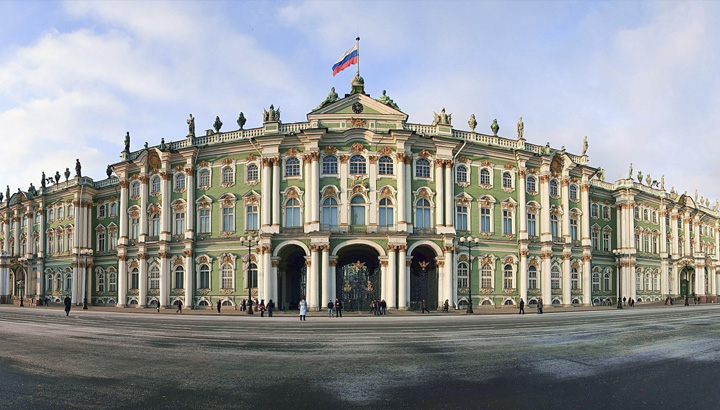
St. Petersburg's most popular visitor attraction, and one of the world's largest and most prestigious museums, the Hermitage is a must-see for all first-time travellers to the city. With over 3 million items in its collection, it also definitely rewards repeat visits, and new-comers can only hope to get a brief taste of the riches on offer here, from Impressionist masterpieces to fascinating Oriental treasures. One estimate has it that you would need eleven years to view each exhibit on display for just one minute, so many visitors prefer to organize a guided tour to ensure they have time to catch all the collection's highlights. Art aficionados, however, may find it more rewarding to seek out for themselves the works that they are particularly interested in.
The Peter and Paul Fortress
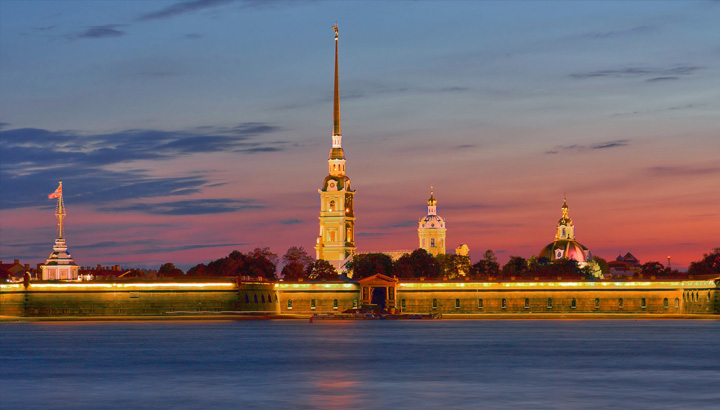
The first structure to be built in St. Petersburg, and thus the birthplace of the city, it never served its intended defensive function. Instead it has had a rich, hugely varied, and sometimes sinister history as a military base, a home of government departments, the burial ground of the Russian Imperial family, the site of groundbreaking scientific experiments, and a forbidding jail that held some of Russia's most prominent political prisoners.
Saint Isaac's Cathedral
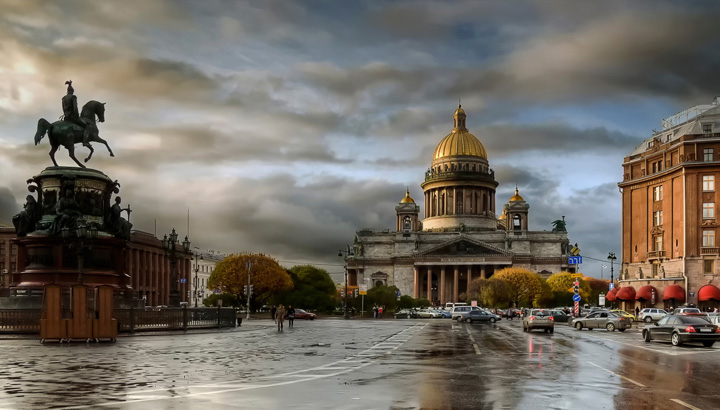
St. Isaac's Cathedral was originally the city's main church and the largest cathedral in Russia. It was built between 1818 and 1858, by the French-born architect Auguste Montferrand, to be one of the most impressive landmarks of the Russian Imperial capital. One hundred and eighty years later the gilded dome of St. Isaac's still dominates the skyline of St. Petersburg.
Church of the Savior on Blood
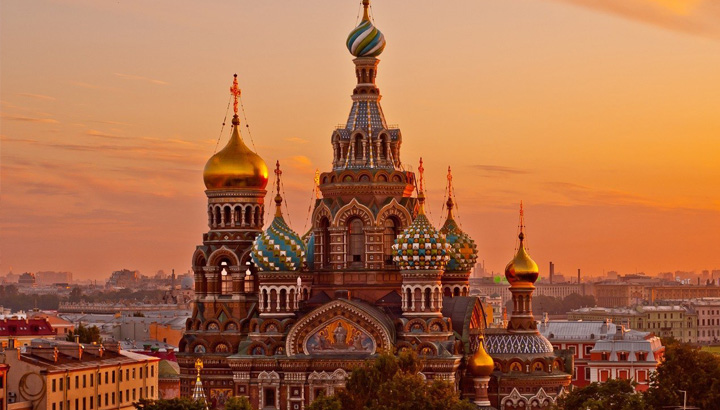
Church of the Resurrection of Jesus Christ is known to Petersburgers as the Church of the Savior on the Spilled Blood - or even just the Church on the Blood - as it marks the spot where Alexander II was fatally wounded in an assassination attempt on March 1, 1881. Designed by Alfred Parland in the style of 16th and 17th-century Russian churches, the Church of the Resurrection provides a stark (some would say jarring) contrast to its surroundings of Baroque, Classical and Modernist architecture.
The State Russian Museum
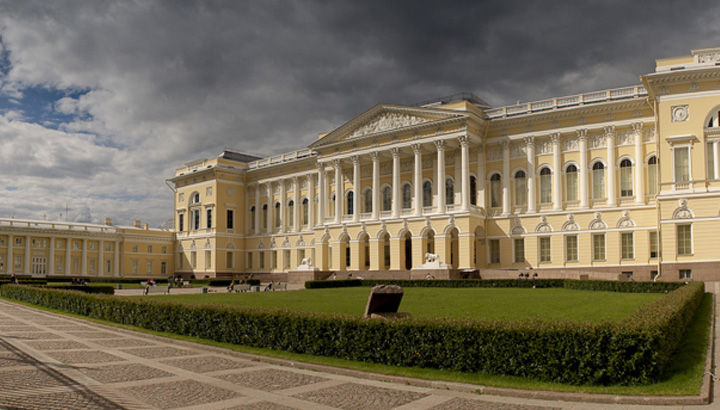
The State Russian Museum is the largest collection of Russian Fine Arts in the world. It was opened on 7 (19) March 1898 and became the first in Russia State museum of Russian art. The collections of Russian museum consists of about 400 000 exponents. There are the masterpieces of all basic trends and schools of national fine art, all its kinds and genres from X to XX th century.
Architectural groups, streets and most important squares of St. Petersburg. Interesting buildings.
Dvortsovaya Ploshchad (Palace Square)
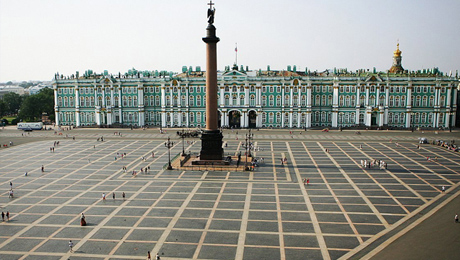
One of the most beautiful and harmonious ensembles of architecture in the world, Palace Square remains the main public space of St. Petersburg after nearly three centuries. Like Red Square in Moscow, Palace Square in St. Petersburg has been the setting of many major events in Russian history.
Strelka of Vasilievsky Island
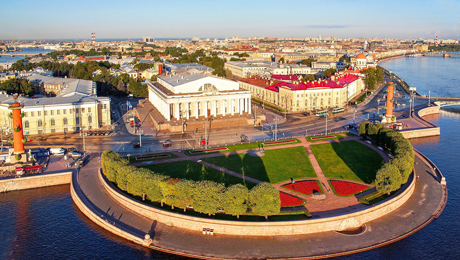
Vasilievsky Island‘s strelka is the easternmost tip of the island which juts out into the Neva River and is lined by some of St Petersburg‘s oldest and most important buildings. The embankment is bordered by fascinating museums, historic colleges, and fine examples of 18th century architecture. Gazing out over the Neva from this idyllic spot offers panoramic views of the Admiralty, Winter Palace, and St Isaac’s – the city’s most striking landmarks. Enjoy the beauty of St Petersburg from the tranquillity and charm of Vasilievsky Island. Or alternatively: soak up the breathtaking views while enjoying a delicious dinner or cocktail at restaurant Bellini, with its enormous windows and fabulous balcony.
Nevsky Prospekt
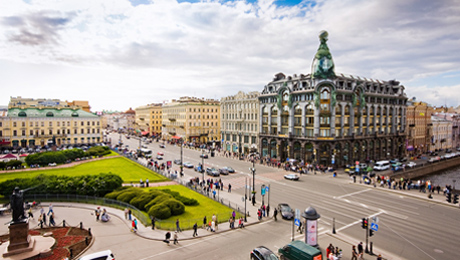
Nevsky Prospekt is St. Petersburg's main avenue and one of the best-known streets in Russia. Cutting through the historical center of the city, it runs from the Admiralty to the Moscow Railway Station and then, after a slight kink, to the Alexander Nevsky Monastery. In the very first days of St. Petersburg it was simply the beginning of the road to the ancient city of Novgorod, but it quickly became adorned with beautiful buildings, squares and bridges and became the very center of the bustling, rapidly growing city.
Bronze Horseman
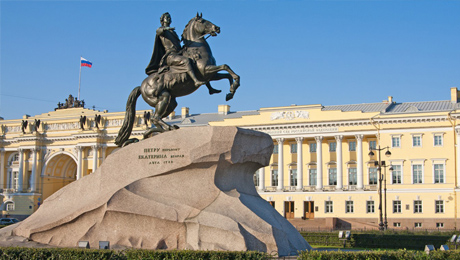
The Bronze Horseman (literally "copper horseman") is an equestrian statue of Peter the Great in Saint Petersburg, Russia. Commissioned by Catherine the Great, it was created by the French sculptor Étienne Maurice Falconet. The name comes from an 1833 poem of the same name by Aleksander Pushkin, which is widely considered one of the most significant works of Russian literature. The statue is now one of the symbols of Saint Petersburg.
Dom Knigi (Singer Company Building)
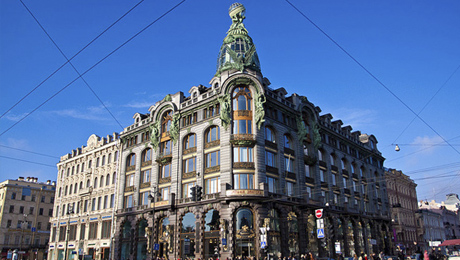
St. Petersburg's largest and most famous bookshop, Dom Knigi ("House of the Book") occupies one of the most beautiful buildings on Nevsky Prospekt - the Singer Company Building, an innovative and richly decorated Art Nouveau masterpiece. The site at the intersection of Nevsky Prospekt and the Griboedov Canal, opposite Kazan Cathedral, was the location of the riding school of Duke Ernst Johann von Biron, the powerful favourite of Empress Anna. In 1902, the plot of land was bought for a million rubles by Singer Manufacturing Company, the world-famous maker of sewing machines.
St. Petersburg Metro
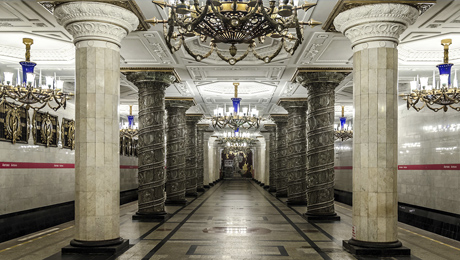
St. Petersburg's metro is perhaps not quite as majestic as Moscow's, but architecturally it's still a cut above nearly any other public transport system in the world. It is also the world's deepest subway, so be prepared for vertiginous views from the top of the escalator.
Moskovsky Prospekt
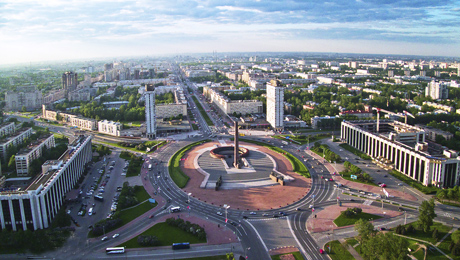
Moskovsky Prsopekt is a 10km thouroughfare leading from the centre of St. Petersburg due south in the direction of Moscow. The avenue appeared at the same time as Nevsky Prospekt, at the beginning of the 18th century. At first the road was built for use by members of the Tsar's family and the high nobility, and access was barred to commoners. For this reason it was originally called Tsarskoselsky Tract, and later Tsarskoselsky Prospekt, from the name of the imperial residence at Tsarskoye Selo. The avenue runs south from Sennaya Ploshchad, which for two centuries was the main market square in the city, in its own way the belly of St. Petersburg.
Vitebsk Rail Station (Vitebskiy Vokzal)
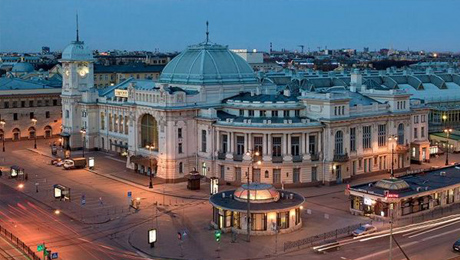
Built on the site of the first railway station in Russia, Vitebsk Station is a magnificent Art Nouveau building that has survived virtually unaltered since it was opened in 1904.
Main Post Office (Glavpochtamt)
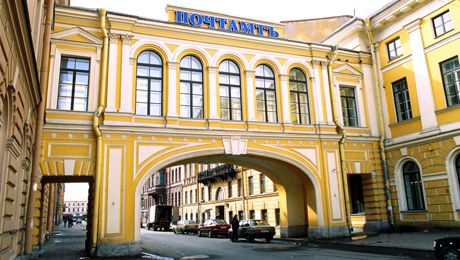
One of the few historical administrative buildings in St. Petersburg to retain its original function (more or less) to this day, the Main Post Office was built 1782-1789 on the orders of Prince Alexander Bezborodko, chancellor, favourite of Catherine the Great, and head of the postal service, whose own palace had just been completed next door.

